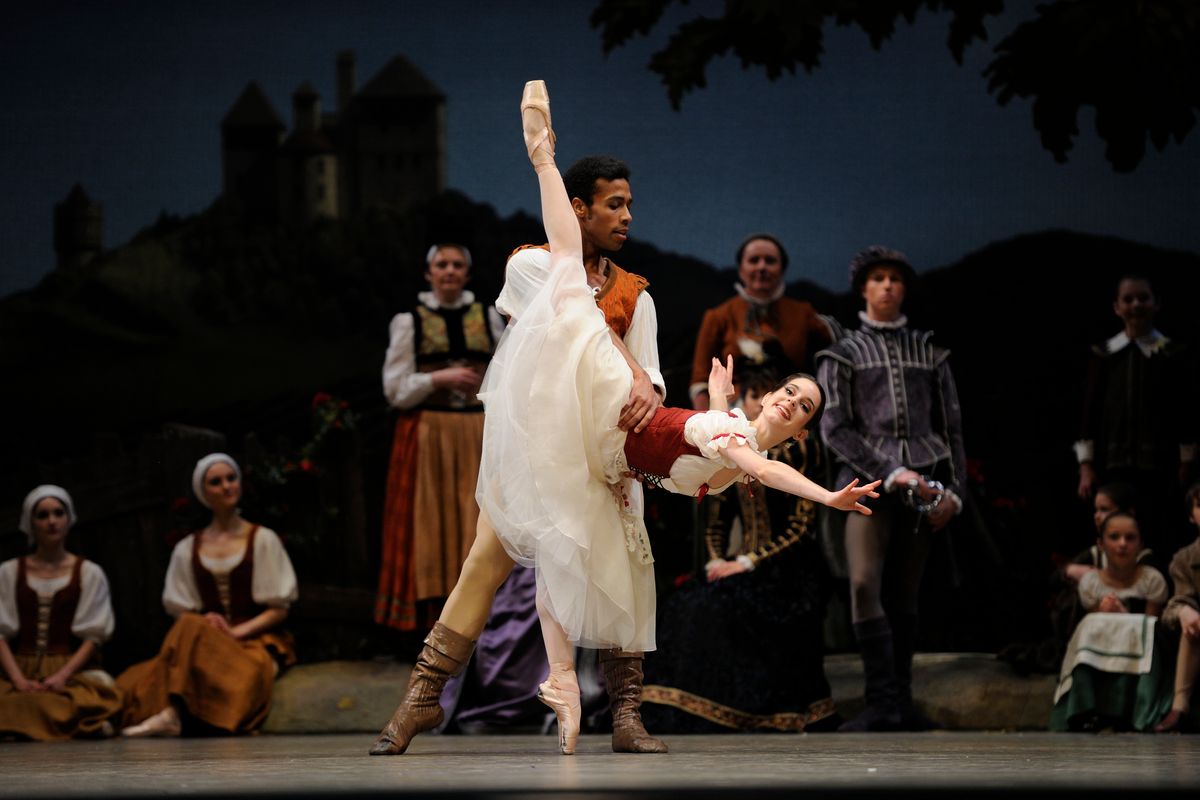Brain Drain: How to Prevent Information Overload in Rehearsals
This story originally appeared in the August/September 2015 issue of Pointe. Updated 11/8/22.
San Francisco Ballet soloist Julia Rowe’s first run-through of Mark Morris’ intensely complicated ballet Maelstrom did not go the way she’d planned. “I went to do my first entrance and blanked—completely,” she says. “I’d already had a full day of learning other ballets and my brain was fried, but there was no time to stop, so the music just kept playing. It took me an eternity to get my bearings and remember at least some of the steps, let alone the timing.”
Memorizing choreography—and retaining the steps and counts—is a skill as important as pirouettes or allegro, and nearly every dancer struggles with it at some point. New company members may have it especially hard, though, when the sudden challenge of learning a large amount of repertoire in a very short time can overload an already fatigued brain and body. Gaining mental stamina takes time and practice, but there are plenty of strategies to improve your brain’s power, speed and focus.
Lay Some Groundwork
First, give yourself a head start by becoming familiar with the ballet beforehand. Watch a video to get an idea of the piece’s structure and style, and listen to the music as much as you can, especially if it’s unusual. Joffrey Ballet’s Fernando Duarte found that studying the notoriously daunting Stravinsky score to Le Sacre du Printemps actually helped him learn the steps, too. “It was a lot of choreography,” he says, “but I listened to the music every day on Spotify to hear the accents and get the counts, and finally I got it.”
After Rowe’s terrifying blank-out, she had a revelation: “It occurred to me that if I could remember how the music went, surely I’d remember the steps to go along with it. That night, I went through the entire ballet and sang the choreography like words to a song. I did the same thing in rehearsal the next day. It worked! I didn’t miss a beat (or a step).”

So Many Steps, So Little Time
Dancers are trained to be detail-oriented, but when the pressure is on to learn quickly, getting stuck on specifics can slow you down. Take your time—particularly with unfamiliar movement. Watch the choreographer or ballet master move before you try to imitate. “Seeing and absorbing with my eyes first is more beneficial for me and actually makes it easier to repeat it afterwards,” says Duarte. “I can understand what they want, and I don’t miss things when they’re turning or facing backwards.”
Focus on the big picture first, advises Rowe. “Establish your outline and then fill in the details,” she says. “If you’re struggling with a phrase, bookmark it and move on. Nine out of 10 times, it will make much more sense when you come back to it later.”
If it doesn’t, think about the transitions before and after your roadblock. Jeffrey Stanton, a ballet master at Oregon Ballet Theatre, says, “It’s as if you’re learning a sentence instead of just words. Connect them all together and train your brain to know what comes next.”
Learning Multiple Roles—and Spots
As a new dancer, apprentice or trainee, it’s common to understudy multiple roles in one ballet—learning three Snowflake spots, for example—or to be asked to step in unexpectedly for a dancer you’re not officially covering. It seems like an impossible task, but Glenn Keenan, a ballet master for New York City Ballet who spent 10 years in the company’s corps, tells dancers to concentrate on one thing at a time. “Focus on learning one part really well, and then it’ll be easier to learn another one and transfer what you already know. But if you try to learn both at the same time, it’s nearly impossible.” Prioritize the part you’re most likely to perform, but stay aware of what else is being taught. And stay calm. Panic only leads to brain shutoff.
Often, reviewing material on your own is necessary to be completely prepared. Asking other dancers or the ballet master for help after rehearsal is a great way to feel more on top of the choreography—and show you’re motivated. And if you’re understudying, remember that it’s in the best interest of the person you’re covering that you know their part, so they’ll likely be eager to help. They may even be able to offer insider tips or explain details you missed.
While some people are naturally faster learners than others, memorizing choreography is part of every dancer’s life. But remember that your brain is a muscle, too—and with practice, patience and some mental discipline, it will become as flexible, strong and fast as your body.

Losing Your Concentration?
Staying focused when your body is tired isn’t easy, but getting frustrated will only sabotage your ability to learn quickly. Here are some tips for keeping your mental stamina sharp.
- Visualize the steps, mark them or write them down to cement the sequence in your head without expending unnecessary energy on dancing full-out.
- Shut out distractions. “Stay in the zone,” says Oregon Ballet Theatre ballet master Jeffrey Stanton. “Focus on what you’re doing, who you’re dancing with, and forget about who’s watching from the doorway.”
- To cope with a heavy workload, compartmentalize your day. Concentrate solely on what you’re doing at any given moment without stressing over your next rehearsal.
- When you get a break, take it. Not only will your muscles rest, but your brain will also have a chance to process what it’s learning. Setting it all aside for even a few minutes to read, chat with friends or think about something unrelated to dance will help you recharge.






